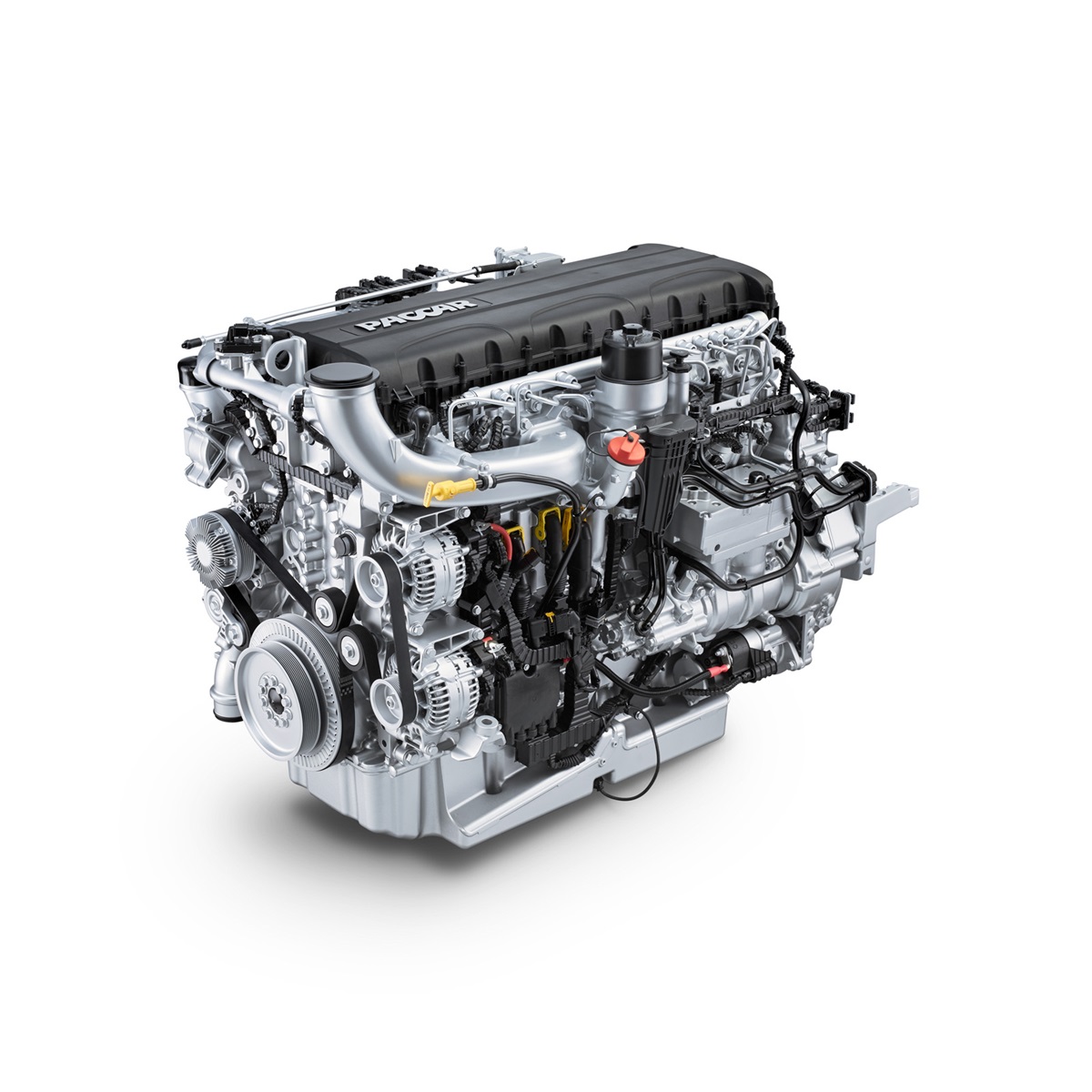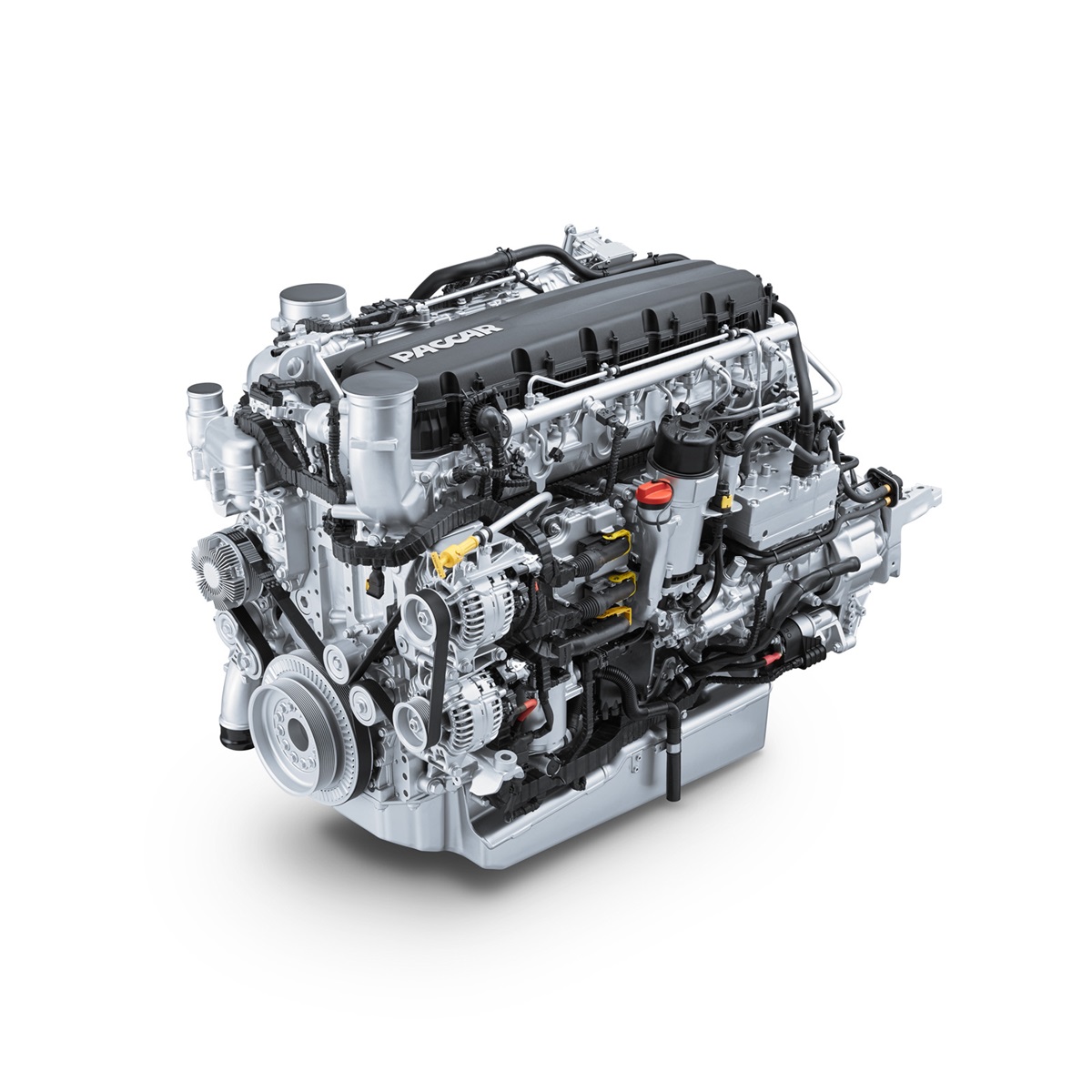Driveline Excellence
Best in class fuel efficiency and thus lower CO2 emissions starts by having the right driveline for the job. Closely working together with our partners DAF offers a range of improved power ratings. These power ratings result in more torque at lower revs. achieving great driveability. Passsengers will be positively surprised by the whisper-quiet DAF drivelines. Cruising at low engine revs assures low noise and vibration levels. It becomes a pleasure to travel.
Engines overview
The MX-13 12.9 Litre and MX-11 10.8 litre PACCAR engines meet the stringent Euro 6 emission requirements while achieving the highest fuel efficiency. DAF applies various exhaust gas aftertreatment technologies like a SCR catalyst and an active particulate filter.
Since the temperature and the composition of the exhaust gases is managed so well, optimum integration of the engine with the exhaust-gas posttreatment system is possible. The SCR catalyst has been further optimized and by the use of a smart coating it has a maximum efficiency over a broader range of temperatures: a box design easy to integrate and low in weight. Next to Euro 6, the MX engines are also available in Euro 3 and 5 emission level.
The PACCAR MX engines are available with outputs from 299 hp to 530 hp and ideal for use in long distance coaches as well as intercity and public transport applications.
PACCAR MX-11 engines
The New Generation 10.8 Litre PACCAR MX-11 engine further lowered its CO₂ footprint. Excellent and increased torque at low engine speeds and a high performance is available over a wide engine speed range.
PACCAR MX-11 engines (Euro 5)
PACCAR MX-11 engines are also available in Euro 5 versions. The main difference between the Euro 6 and Euro 5 versions relates to the exhaust aftertreatment system and the available MX-11 engine variations. Compared to the Euro 6 version, the Euro 5 version lacks a DOC (Diesel Oxidation Catalyst) and DPF (Diesel Particulate filter) unit. This means the Euro 5 version has no active soot fi lter. The Euro 5 version can only be specified as MX-11 300 or MX-11 330. The performance of these engines is comparable to the Euro 6 versions.

PACCAR MX-13 engines
The 12.9 Litre PACCAR MX-13 engine uses state of the art technologies, fi rst class materials, extensive function integration and a heavy duty foamed wire loom to achieve highest reliability and durability.
PACCAR MX-13 engines (Euro 5 / Euro 3)
PACCAR MX-13 engines are also available as Euro 5 and Euro 3 versions. The main difference between these versions relates to the exhaust aftertreatment system. Compared to the Euro 6 version, the Euro 5 version lacks a DOC (Diesel Oxidation Catalyst) and DPF (Diesel Particulate filter) unit. This means the Euro 5 version has no active soot filter. The Euro 3 version does not contain an exhaust aftertreatment system but is only equipped with an exhaust silencer to damp sound. There are no major differences in engine performance between the three versions.


